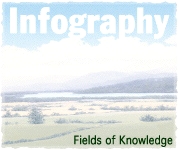
 | |
Spectroscopy -- Perturbed Angular Correlation | |
The following sources are recommended by a professor whose research specialty is spectroscopy. |
· H. Frauenfelder and R.M. Steffen, p. 997 in Alpha-, Beta- and Gamma-Ray Spectroscopy, K. Siegbahn, ed. (North-Holland, 1968). Classic description of the theory of perturbed angular correlation spectroscopy.
· W.D. Hamilton, ed., The Electromagnetic Interaction in Nuclear Spectroscopy (North-Holland, 1975). Comprehensive theoretical treatments of angular correlations by R.M. Steffen and A. Alder in Chapters 12 and 13 and by W.D. Hamilton in Chapter 14.
· E.B. Karlsson, Solid State Phenomena: As Seen by Muons, Protons and Excited Nuclei (Clarendon Press, 1995). Excellent introduction to perturbed angular correlation and muon spin resonance and relaxation spectroscopies. Applications of PAC in studies of magnetism, point defects, surfaces and hydrogen.
· G. Schatz and A. Weidinger, Nuclear Condensed Matter Physics: Nuclear Methods and Applications (John Wiley and Sons, 1996). Excellent introduction to PAC and many other methods growing out of the nuclear physics area and applied to materials.
· J. Christiansen, ed., Hyperfine Interactions of Radioactive Nuclei (Springer-Verlag, Topics in Current Physics, vol. 31, 1983). Introduction to PAC and related methods such as perturbed angular distribution and beta nuclear magnetic resonance. Chapters written on applications in atomic, nuclear, and condensed-matter physics include reviews of studies of defects in metals and of quadrupole interactions in noncubic metals.
· T. Wichert and E. Recknagel, pp. 317-64 in Microscopic Methods in Metals, U. Gonser, ed. (Springer-Verlag, 1986), Topics in Current Physics, vol. 40. Well-written introduction to PAC spectroscopy and methods, with brief description of applications to study hyperfine fields at impurities, surfaces, hydrogen diffusion, and defects.
· E. Karlsson, E. Matthias, and K. Siegbahn, eds., Perturbed Angular Correlations, Proceedings of the 1963 Uppsala Conference (North-Holland, 1964).
· E.N. Kaufmann and G.K. Shenoy, eds., Nuclear and Electron Resonance Spectroscopies Applied to Materials Science, 1980 Boston Conference (Materials Research Society Symposium Proceedings, vol. 3, 1981).
· T. Wichert, N. Achtziger, H. Metzner, and R. Sielemann, pp. 77-156 in Hyperfine Interaction of Defects in Semiconductors, G. Langouche, ed. (Elsevier, 1992). Applications of PAC to study defects in semiconductors.
· G.S. Collins, S.L. Shropshire, and J. Fan, Hyperfine Interactions 62, 1-34 (1990). Application of PAC to study point defects in metals and intermetallic compounds.
· Hyperfine Interactions, a journal of Kluwer Academic Publishers, publishes many articles related to perturbed angular correlation as well as other hyperfine interaction spectroscopies including Mössbauer effect, nuclear orientation, and electron-nuclear double resonance. The journal also publishes proceedings of the International Conferences on Hyperfine Interactions, a series held triannually. http://www.springerlink.com/content/1572-9540/
· G.S. Collins, ed. PAC Worldwide. A list of links to groups using perturbed angular correlation in their research. http://defects.physics.wsu.edu/hfi-group-links.html
"The Infography about Perturbed Angular Correlation in Spectroscopy"
http://www.infography.com/content/411484962986.html
© 2009 Fields of Knowledge
Essex, Iowa 51638-4608 USA